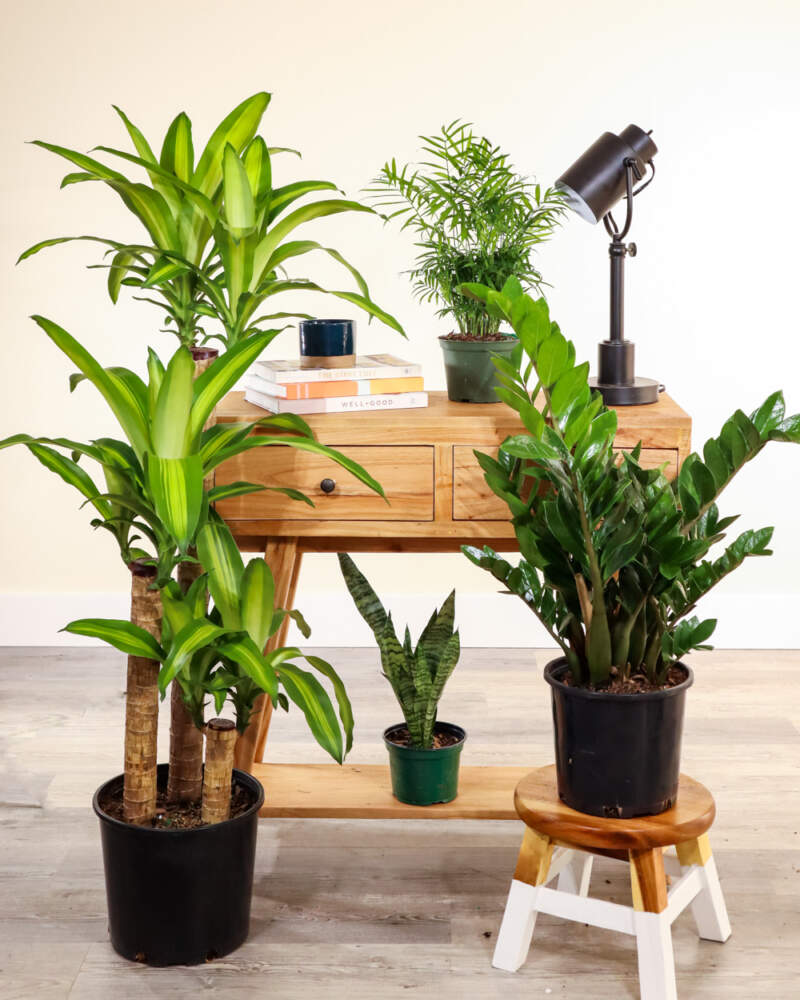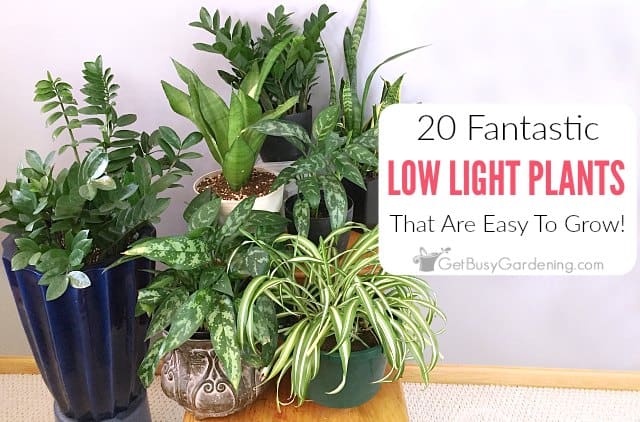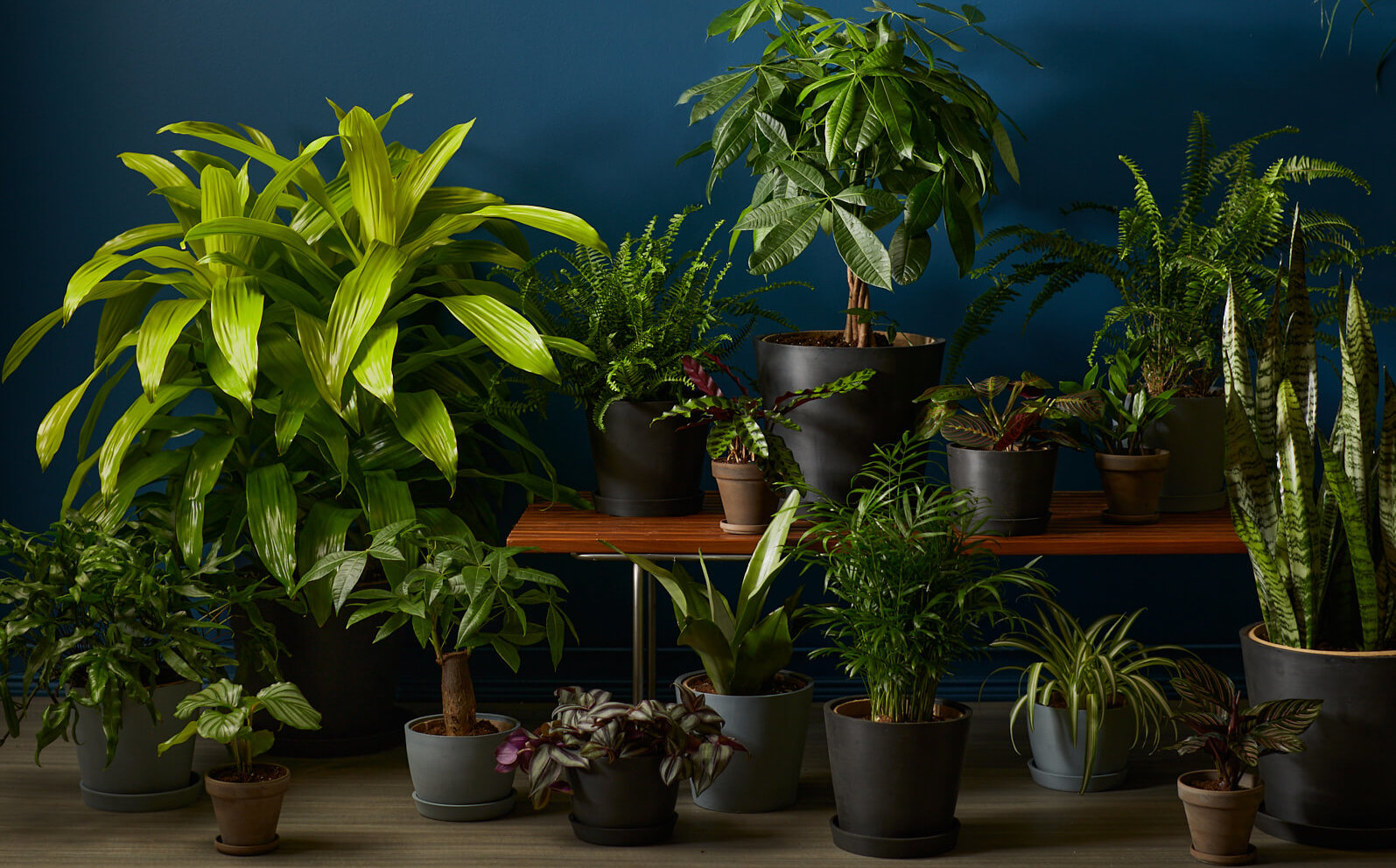Discover the Keys of Low-Light Indoor Plants and How They Enhance Your Setting
Low-light indoor plants have actually gathered raising interest for their distinct capability to improve both visual charm and environmental high quality within workplaces and homes. These resilient varieties, including the Serpent Plant and Tranquility Lily, not only prosper in difficult lights conditions however additionally play a pivotal function in air filtration and emotional well-being. Understanding the details advantages and care requirements of these plants can considerably affect your home. As we discover the ins and outs of their benefits, you might discover understandings that might change your surroundings in unexpected methods.
Advantages of Low-Light Indoor Plants
Although lots of people presume that indoor plants need bountiful sunlight to flourish, low-light interior plants provide a wide range of advantages that make them optimal for different environments. Among the primary advantages is their flexibility; they can prosper in spaces with limited all-natural light, such as workplaces, cellars, or rooms with small windows. This function permits individuals to improve their surroundings with greenery, adding to improved looks without the need for comprehensive lights adjustments.
Furthermore, low-light indoor plants can dramatically boost indoor air quality by filtering system dangerous toxic substances and launching oxygen, making living spaces healthier. Study has actually revealed that specific varieties can take in toxins, therefore promoting a cleaner environment. Furthermore, they can boost psychological health by decreasing anxiety and boosting performance. The visibility of plants has been linked to greater feelings of serenity and focus.
Furthermore, low-light plants frequently need much less maintenance than their sun-loving equivalents, making them ideal for active people or those new to gardening. Their resilience permits them to love very little treatment, hence providing a rewarding experience for plant enthusiasts and amateurs alike. In recap, low-light indoor plants serve both functional and aesthetic purposes, making them valuable additions to any type of space.
Leading Low-Light Plant Ranges
Low-light interior plants can be found in a range of types, each offering special characteristics and advantages suited for dim settings. Amongst one of the most preferred varieties is the Serpent Plant (Sansevieria), understood for its air-purifying capacities and building leaves. This durable plant grows on disregard and can endure a wide variety of light problems.
One more exceptional choice is the ZZ Plant (Zamioculcas zamiifolia), which includes shiny, dark environment-friendly fallen leaves and is highly drought-tolerant. Its flexibility makes it a preferred for offices and homes with minimal sunlight.
The Pothos (Epipremnum aureum) is additionally a top competitor, with its routing creeping plants and heart-shaped fallen leaves - Best low-light indoor plants. This flexible plant can be trained to climb or cascade, including visual rate of interest to any room

Care Tips for Low-Light Plants
Looking after low-light interior plants calls for a nuanced understanding of their details needs to guarantee ideal development and vigor. Initially, it is necessary to choose the best potting mix, as a well-draining dirt is vital to stop root rot. A mix developed for houseplants, often including peat moss and perlite, functions well for most low-light varieties.
Watering is one more key aspect of treatment. Low-light plants generally need less constant watering contrasted to their sun-loving equivalents. It is a good idea to examine the leading inch of soil; if it really feels completely dry, it's time to water. Overwatering can result in problems such as mold and root decay.
Fertilization ought to be approached with care. Throughout the growing period, a diluted fluid fertilizer can be used monthly, however in winter season, several low-light plants enter dormancy and require here are the findings little to no fertilization.
Lastly, it is essential to regularly clean up the leaves to eliminate dirt, permitting better light absorption. By adhering to these care pointers, you can grow a thriving environment for your low-light interior plants, improving both their look and long life.
Enhancing Air Quality With Plants
Indoor plants play a substantial role in boosting air quality within homes and office. With the procedure of photosynthesis, these plants take in co2 and launch oxygen, adding to a much healthier ambience. Additionally, particular low-light indoor plants have the capability to filter harmful contaminants, such as benzene, formaldehyde, and trichloroethylene, which are typically located in indoor atmospheres.

Additionally, the presence of interior plants can boost moisture degrees, which assists relieve completely dry skin and respiratory system concerns, additionally improving overall wellness. This capacity to boost air quality not just advertises physical wellness but also sustains mental wellness.
Including low-light interior plants into your living and working rooms can bring about a much Our site more vivid and stimulating atmosphere (Best low-light indoor plants). Spending in these all-natural air purifiers is an easy yet effective approach for improving indoor air high quality and fostering a much healthier lifestyle
Creating a Tranquil Indoor Area
The assimilation of plants right into living rooms not only enhances air high quality but additionally adds to a relaxing atmosphere. Low-light indoor plants, such as snake plants and pothos, are especially efficient in developing a tranquil environment, as they grow in conditions that might otherwise be inhospitable for other plant. Their rich foliage supplies a relaxing visual, minimizing stress and advertising leisure.
Integrating these plants right into your office or home can evoke a sense of peace and wellness. Tactically positioning them in locations where you spend substantial time, such as living work spaces or rooms, allows for an immersive experience with nature, which has actually been revealed to boost mood and cognitive function.
Moreover, the mild motion of leaves in feedback to air flow can produce a dynamic aesthetic component that improves the total setting. Consider making use of a variety of plant heights and appearances to include depth and rate continue reading this of interest to your room. With thoughtful placement and care, low-light indoor plants can change any type of area right into a tranquil haven, fostering not only aesthetic complete satisfaction but psychological and also psychological wellness.

Verdict
Incorporating low-light indoor plants right into various settings yields substantial benefits, including enhanced air top quality and boosted aesthetic appeal. The transformative power of low-light plants emphasizes their worth in improving both work and property settings.
Although lots of people presume that indoor plants call for abundant sunshine to thrive, low-light indoor plants offer a multitude of advantages that make them perfect for numerous atmospheres.Additionally, low-light interior plants can significantly enhance interior air top quality by filtering harmful toxins and releasing oxygen, making living spaces healthier. In addition, certain low-light indoor plants have the ability to filter dangerous contaminants, such as benzene, trichloroethylene, and formaldehyde, which are commonly found in indoor settings.
Low-light indoor plants, such as snake plants and pothos, are particularly reliable in producing a serene setting, as they prosper in problems that might or else be inhospitable for other plant.Including low-light indoor plants right into numerous settings yields significant advantages, consisting of improved air top quality and improved visual charm.